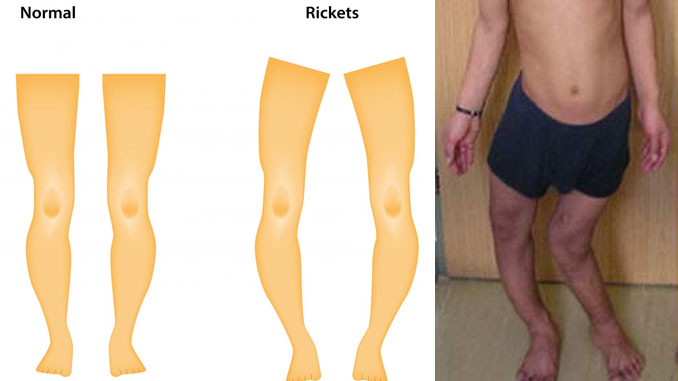Family, Children & Elderly
Rickets
By D.A. (staff writer) , published on December 03, 2020

Medicine Telehealth Health Rickets
Rickets is a skeletal disorder that’s caused by a lack of vitamin D, calcium, or phosphate. These nutrients are important for the development of strong, healthy bones. People with rickets may have weak and soft bones, stunted growth, and, in severe cases, skeletal deformities.
Vitamin D helps your body absorb calcium and phosphate from your intestines. You can get vitamin D from various food products, including milk, eggs, and fish. Your body also produces the vitamin when you’re exposed to sunlight.
A vitamin D deficiency makes it difficult for your body to maintain sufficient levels of calcium and phosphate. When this occurs, your body produces hormones that cause calcium and phosphate to be released from your bones. When your bones lack these minerals, they become weak and soft.
Risk factors
Risk factors for rickets include the following:
Age
Rickets is most common in children who are between 6 and 36 months old. During this time period, children usually experience rapid growth. This is when their bodies need the most calcium and phosphate to strengthen and develop their bones.
Diet
You have a higher risk of developing rickets if you eat a vegetarian diet that doesn’t include fish, eggs, or milk. You’re also at an increased risk if you have trouble digesting milk or have an allergy to milk sugar (lactose). Infants who are only fed breast milk can become deficient in vitamin D as well. Breast milk doesn’t contain enough vitamin D to prevent rickets.
Skin color
Children of African, Pacific Islander, and Middle Eastern descent are at the highest risk for rickets because they have dark skin. Dark skin doesn’t react as strongly to sunlight as lighter skin does, so it produces less vitamin D.
Geographic location
Our bodies produce more vitamin D when they’re exposed to sunshine, so you’re more at risk for rickets if you live in an area with little sunlight. You’re also at a higher risk if you work indoors during daylight hours.
Genes
One form of rickets can be inherited. This means that the disorder is passed down through your genes. This type of rickets, called hereditary rickets, prevents your kidneys from absorbing phosphate.
Diagnosis
Your doctor may be able to diagnose rickets by performing a physical examination. They will check for tenderness or pain in the bones by lightly pressing on them. Your doctor may also order certain tests to help make a rickets diagnosis, including:
- blood tests to measure the levels of calcium and phosphate in the blood
- bone X-rays to check for bone deformities
In rare cases, a bone biopsy will be performed. This involves the removal of a very small section of bone, which will be sent to a laboratory for analysis.
Symptoms
Symptoms of rickets include:
- pain or tenderness in the bones of the arms, legs, pelvis, or spine
- stunted growth and short stature
- bone fractures
- muscle cramps
- teeth deformities, such as:
- delayed tooth formation
- holes in the enamel
- abscesses
- defects in the tooth structure
- an increased number of cavities
- skeletal deformities, including:
- an oddly shaped skull
- bowlegs, or legs that bow out
- bumps in the ribcage
- a protruding breastbone
- a curved spine
References
Find articles related to: Medicine Telehealth Health Rickets
More articles about Family, Children & Elderly
Back to the Health Tips Index




